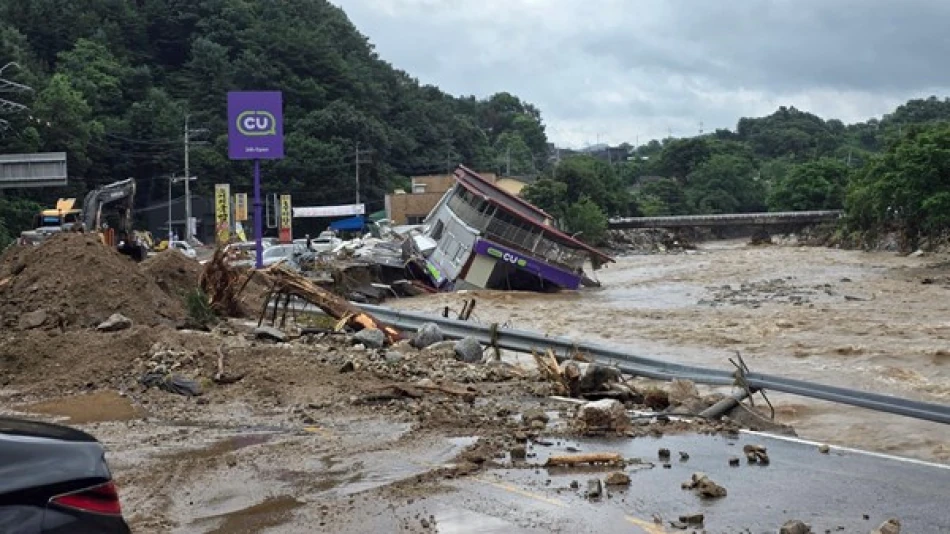
South Korea Relentlessly Searches for Missing Persons Amid Devastating Floods
South Korea's Deadly Summer Floods Expose Growing Climate Vulnerability as Death Toll Reaches 19
South Korea continues grappling with the aftermath of devastating floods that killed 19 people and left nine missing, highlighting the country's increasing susceptibility to extreme weather events. With over 14,000 people displaced and thousands of buildings damaged, the disaster underscores how even technologically advanced nations struggle against intensifying climate patterns.
Rescue Operations Continue Amid Mounting Casualties
South Korean authorities are still searching for nine missing persons following last week's torrential rains and subsequent landslides. The Interior Ministry confirmed an additional fatality, bringing the death toll to 19 people across multiple provinces.
The hardest-hit area was Sancheon town in Gyeongsang Province, where 10 people died. Gyeonggi Province reported five deaths, while Chungcheong Province saw three fatalities and Gwangju city recorded one death. The geographic spread of casualties demonstrates the storm system's extensive reach across the Korean Peninsula.
Infrastructure Damage Reveals Urban Planning Challenges
Emergency repair work is underway on approximately 2,976 buildings and facilities out of 6,752 structures that sustained damage. This represents a significant infrastructure impact that will likely require substantial government investment to fully address.
More than 14,000 residents sought shelter during the flooding, with 2,549 people still unable to return home. This prolonged displacement suggests extensive property damage that goes beyond immediate structural repairs, potentially affecting local economies and communities for months.
Climate Pattern Intensification Hits East Asia
South Korea's flooding mirrors a broader regional trend of intensifying summer monsoons across East Asia. Similar to recent extreme weather events in China and Japan, these floods demonstrate how traditional infrastructure struggles to cope with increasingly unpredictable precipitation patterns.
The Korean Peninsula's mountainous terrain makes it particularly vulnerable to flash flooding and landslides when monsoon rains exceed historical averages. Urban areas built in valleys and coastal plains face compounded risks as development has often occurred in natural flood zones.
Economic and Policy Implications
For South Korea's economy, such disasters pose growing challenges to manufacturing hubs and supply chains. The country's heavy reliance on precision industries like semiconductors and automotive production makes infrastructure resilience increasingly critical for maintaining competitiveness.
The government will likely face pressure to accelerate climate adaptation investments, similar to initiatives undertaken by Japan and Singapore. This could include enhanced flood control systems, improved early warning networks, and stricter building codes in vulnerable areas.
Insurance markets may also reassess risk models for the region, potentially affecting coverage costs and availability for both residential and commercial properties in flood-prone zones.
Most Viewed News

 Layla Al Mansoori
Layla Al Mansoori






